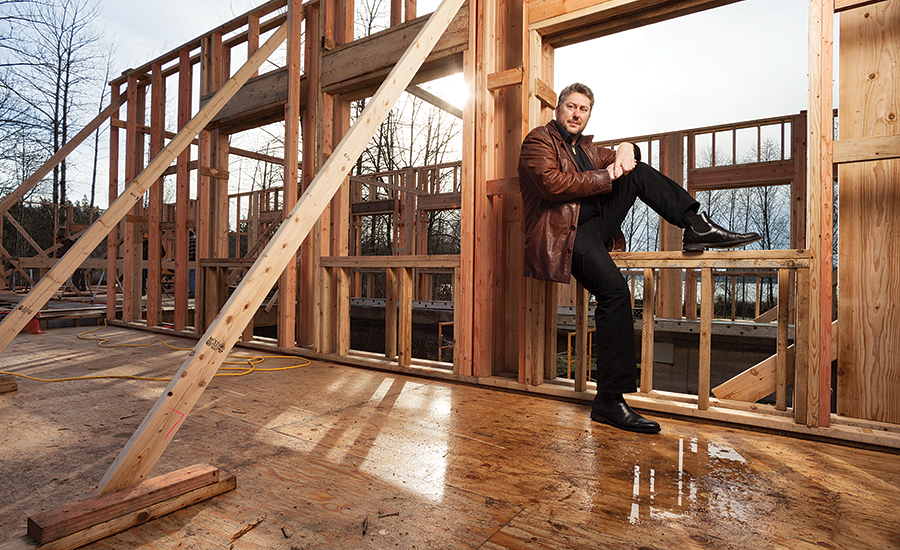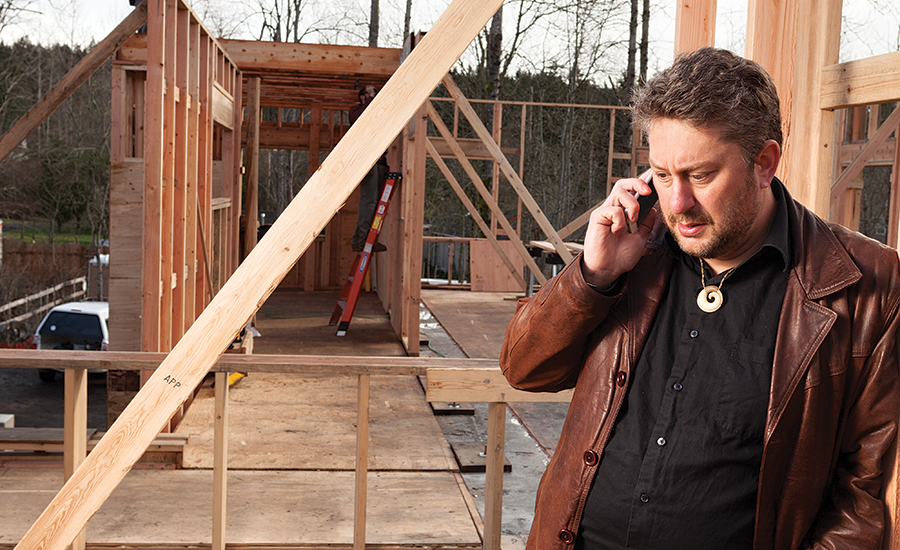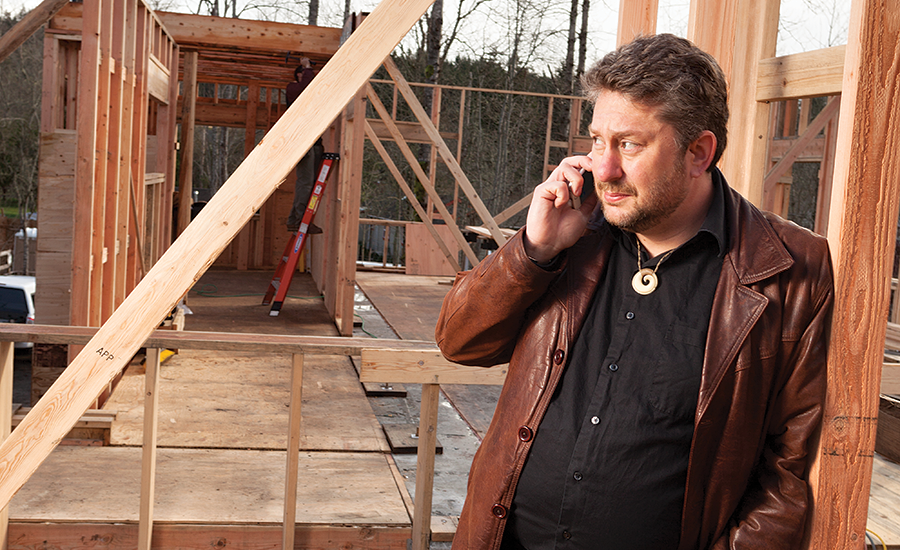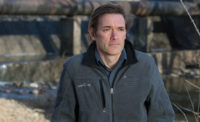Gruesome is the word Jason F. McLennan uses to describe an unsettling—yet valuable—experience that serves as a personal parable. The incident occurred early in the career of the 42-year-old creator of the rigorous Living Building Challenge—the world’s leading-edge ultra-green building certification program.
One dark night on a road outside Kansas City, McLennan was driving his boss, veteran green architect Bob Berkebile, back to town after a meeting. The protégé, a recent architecture-school graduate, and his mentor were absorbed in one of their frequent philosophical conversations.
Suddenly, a small animal, which turned out to be an opossum, darted in front of the car. “I hit it and killed it,” says McLennan. “It was jarring and very upsetting to both of us.”
At Berkebile’s suggestion, McLennan stopped the car, and the two got out. “Bob, who always saw a larger pattern or truth, wanted to explore whether any lessons could be learned from the opossum’s death,” says McLennan. “If you want to be a change agent, you need to think that way.”
One possible lesson was that, because they were so engrossed in their talk, they had lost sight of the universe around them. Yet, that night, McLennan learned another, deeper lesson from Berkebile. “When you see what’s happening around you, you can sink into despair,” he says. “The mature response when dealing with loss or tragedy, I learned from Bob, is to acknowledge it—not bury or hide it—and turn it into something positive.”
Turning negatives into positives, especially around people and the planet, borders on an obsession for McLennan, whose first name means “healer” in Greek.
“Instead of a world that is merely a less-bad version of the one we already have, imagine if everything we built made the world a better place,” says McLennan, founder and chairman of the Seattle-based International Living Future Institute (ILFI), which administers the demanding Living Building Challenge and his other audacious build-better programs.
So far, the LBC is McLennan’s most positive mark. A Living Building—a term coined by McLennan in 1997, while working for Berkebile at BNIM Architects—generates all its energy from renewable resources, captures and treats all its water on site, composts biosolids and is constructed using resources efficiently. It is independent of the power grid and incurs no utility bills.
The first version of the unprecedented performance-based standard was only 20 pages. But McLennan expressly included difficult and often unattainable imperatives for net-zero annual energy and water use as well as for toxin-free materials and products. For certification, a Living Building also had to achieve its strict goals after occupancy.
“I wrote a challenging yet elegant standard I thought would be the best way to re-orient the thinking of the design … and construction communities, even if they didn’t know how to follow it at first,” says McLennan, who did include exceptions to his rules. “The standard said, ‘Success looks like this. Who wants to sign up?’ ”
Thanks to McLennan, the ILFI staff and the LBC champions, who produce the living proofs of concept, the nine-year-old standard is gaining traction. There are 330 LBC-registered projects in 19 nations, totaling 14 million sq ft. Of these, 180 are on the Living Building path, the top level of performance. There are nine certified Living Buildings, totaling 105,572 sq ft.
|
Related Articles: Crusading Gentle Green Warriors Bent on Reducing the Fear Factor |
For turning the world’s first extreme-green building program into a global movement and galvanizing hundreds of building teams to raise the bar for sustainability, McLennan has been voted the 51st Award of Excellence winner by the editors of Engineering News-Record.
“Jason has created the forward guard of the sustainability movement,” says Michelle Moore, CEO of Groundswell, a nonprofit that serves the energy needs of communities, and a former senior vice president of the U.S. Green Building Council (USGBC).
“He didn’t invent the idea of a good building, but Jason created a framework to fundamentally reconceptualize the relationship of a building to its environment,” says Brian Court, a partner with Miller Hull Partnership, architect for Seattle’s 52,000-sq-ft Bullitt Center, the first speculative office building to achieve Living Building status.
In late 2006, when McLennan launched his LBC at a USGBC national conference, he sent shock waves through the green-building establishment. People thought it made projects too difficult and expensive.
“When you are asking people to follow you into the abyss, it takes … bravery and ego,” says Elizabeth J. Heider, chief sustainability officer for Skanska USA, owner’s representative for the 10,520-sq-ft Brock Environmental Center, Virginia Beach, Va. Soon to receive Living Building status, Brock is the first U.S. building allowed to make potable water from captured rainwater.
In its latest 78-page version, the LBC, which uses the metaphor of a flower, requires net-positive energy and water use. Each performance area—place, water, energy, health and happiness, materials, beauty and equity—is a petal. Since 2010, buildings can be Petal-certified, but teams must select at least one of the three most difficult petals to achieve: energy, water or materials.
The flower metaphor came to McLennan in the late-1990s, when he read “Biomimicry,” published by William Morrow in 1997. The book, which is about imitating biology to develop sustainable systems, “shifted Jason’s lens,” says the book’s author, biologist Janine Benyus, co-founder of the Biomimicry Institute.
McLennan has spearheaded other innovative green benchmarks. He started the first certification program for net-zero buildings. He masterminded the Living Community Challenge and the Living Product Challenge, for suppliers to green their operations. There are 20 registered LPC pilot projects.
Calling McLennan relentlessly impatient and unapologetic, Brendan Owens, USGBC’s chief of engineering, says, regarding the LPC and other standards, “Jason gets something to 80% and puts it out for others to finish.”
McLennan does that on purpose. “You can never know enough to perfect something,” he says. “This is all about moving the industry forward, fast!”
Earlier innovations include the Red List, the first index of banned harmful chemicals in building materials. McLennan started Declare, the first product ingredient label. The 415 labels from 85 suppliers are simplifying the materials petal compliance. Declare was just approved as a building-product transparency disclosure mechanism for LEED, USGBC’s 15-year-old green-building rating system.
For suppliers, the LPC and Declare programs are a way to trim operating costs and gain market share. “We knew it gave our competitors heartburn,” says Scott Miller, director of sustainability for Knauf Insulation Inc., which started greening its products in 2008.
In 2010, ILFI introduced Just, the first social justice label that rates employee diversity, equity, office environment and safety. Reveal, released last year, is the first label that states building energy consumption.
McLennan also has written six books on sustainability, published by ECOtone Publishing Co., now part of ILFI. He formed ECOtone in 2002, when he was 29 years old, by mortgaging his house.
Considered both a “green wunderkind” and, at 6 ft, 2 in., a “gentle green giant,” McLennan impresses even the old guard. “Jason’s a dynamo with a million ideas and boundless energy who draws others into his enthusiasm,” says Denis Hayes, president of the Bullitt Foundation, which developed the Bullitt Center as a supermodel for sustainability. The office building, completed in 2013 for 25% more than the cost of a Class A space, ultimately is expected to provide a 7% or 8% annual return on investment. Rents are market rate.
To Skip Backus, CEO of the nonprofit Omega Institute and an early adopter of the LBC, in 2007— when, he says, “it was no more than a pipe dream”—McLennan is a “born leader” with a patient disposition. The 6,246-sq-ft Omega Center for Sustainable Living in Rhinebeck, N.Y., includes a natural wastewater filtration plant designed by BNIM to look like a greenhouse. It was the first building to attain both LEED Platinum—the highest level—and Living Building status.
Russell Perry, a vice president of SmithGroupJJR, Brock’s architect and consulting engineer, adds, “Jason is capturing the imagination of a new generation.”
Restless To Practice
In 2012, restless to practice his preachings, McLennan began weaning himself from ILFI. On Jan. 1, he handed the CEO reins to Amanda Sturgeon, formerly executive director, and became ILFI’s chairman.
His new full-time job is CEO and design partner of McLennan Design LLC. Formed in 2013, the firm is targeting rich clients committed to ultra-green projects (see p. 48). Some profits are going to McLennan’s fledgling Green Warrior Society. GWS offers free or discounted services to charitable groups in need of deep-green buildings. “It’s a bit of a Robin Hood model,” says McLennan.
GWS, expected to gain nonprofit status, is rallying construction industry firms to join the cause. “Sustainability should be for everyone, regardless of income or social position,” says McLennan.
McLennan’s planet-healing obsession is traceable to his birthplace. He was born on June 13, 1973, to Fred, a community-college professor, and Sandra, a nurse. The McLennan family lived in Sudbury, Canada, an ecologically devastated nickel-mining city in northern Ontario. Nearly a century of industry had turned a verdant landscape into a virtual moonscape.
“It was bleak where I lived,” says McLennan, who thought the smelter’s 1,250-ft-tall smokestack resembled a giant cigar stuck in the ground, spewing smoke.
McLennan suffers from allergies and asthma. His two older sisters have immune-system disorders. He believes the ailments are linked to the industry.
For two weeks every summer, the McLennans escaped to his Aunt Rita’s cabin on a one-acre wilderness island. The 800-sq-ft cabin, built by hand from salvaged materials, had no electricity, running water or indoor plumbing. Supplies were limited, so conservation was key. It was McLennan’s first “living” building.
Island life made a big impression. McLennan spent time with family, taught himself guitar, explored the woods by day and watched the stars at night.
Back home, a Sudbury reforestation project also made a positive impression. McLennan participated by planting trees. “The trees grew at the same pace as I did, changing the landscape around me,” he says. “The experience taught me that we could be agents of regeneration, not just destruction.”
In middle school, he learned a more shocking lesson, when a shopping-center developer cut down some of the very trees McLennan and his classmates had planted, scraped away soil and blasted the rock to build a parking lot. “It was very painful to see this reverse,” he says. He sensed there were better ways to build.
By high school, he had decided to seek them through architecture. For college, he attended the University of Oregon, which had one of the few sustainable-design programs. “Jason was in the top 1% of all my students,” says John Reynolds, an Oregon professor of architecture emeritus. “He was unusually highly motivated, always searching and not satisfied.”
Another architecture professor, Robert Peña, now at the University of Washington, recalls McLennan as “persistent and earnest,” with a big heart.
Helping Hands
McLennan believes in the late mythologist Joseph Campbell’s notions of invisible helping hands and of following one’s bliss to achieve a better life. “Whenever I’ve been willing to go out on a limb for the right reasons—trying to make a difference in the world—amazing things happen and amazing people come along to share the journey,” says McLennan.
“I think it was amazing I ended up at the University of Oregon when that school had the best concentration of sustainable thinkers,” he adds. “This also put me in a position to be ‘found’ by Bob Berkebile.”
In 1996, Berkebile hired McLennan sight unseen, after, unbeknownst to the student, Oregon professors singled him out from a field of 24 applicants for the BNIM internship.
During phone interviews, “Jason wanted to know if we could co-author a book and if I could give him a national voice in the green movement,” says Berkebile, BNIM principal emeritus. “He couldn’t have defined a path, but he knew he wanted to make a difference.”
The idea of helping hands resonates so much with McLennan that they symbolically figure in his drawings for the proposed 7th Battalion, 158th Aviation Regiment Memorial in Gardner, Kan. The concept shows cupped hands—seating tiers—that seem about to release a helicopter into final flight. The memorial, a pro bono project, will honor 30 men killed in Afghanistan on Aug. 6, 2011, while aboard a Chinook helicopter. Spencer, the son of Dale R. Duncan, McLennan’s managing partner, was among the 30.
McLennan also credits his success to visible helping hands, especially his parents and paternal aunts. “I grew up in a matriarchy of fortune tellers, musicians and artists,” he says, “but I also had a strong father,” who was analytical and athletic.
McLennan’s environmentalist leanings are rooted in his childhood. But the inspiration for the LBC came, in part, from his frustration with LEED, which he worked on. The credit-based prescriptive rating system transformed the marketplace but became watered down by stakeholders during the consensus process, he says. LEED didn’t go far enough for McLennan.
Another inspiration for the LBC was EPIcenter, a federally funded BNIM project for the University of Montana, Bozeman, intended as a living laboratory to showcase green technologies.
Working with the EPIcenter team, which included the best minds in water, materials, human health and computer modeling, was like getting a PhD, says McLennan. “For three years, I was in paradise,” he adds.
In 1999, McLennan put forth his Living Building idea, which Berkebile helped him to develop, in an article titled “The Living Building,” coauthored with Berkebile and published in World & I magazine.
In 2000, EPIcenter was killed, mostly for political reasons. McLennan didn’t want the research to go to waste, so, at age 29, he convinced BNIM partners to let him start Elements, a green consultancy to architects.
“With Bob’s tutelage, I built up a $1-million consulting practice,” says McLennan. “I guess I’ve always been entrepreneurial.”
In 2002, McLennan married Tracy Willett, who had a five-year-old, Julian Willett. The couple has two more boys—Declan, 12, and Aidan, 10—and a girl, Rowan, 7. In 2004, after he finished a master’s degree in architectural management at the University of Kansas, he started writing the LBC over weekends. The same year, he became BNIM’s youngest partner.
In 2006, frustrated with the pace of change for deep-green buildings, he decided to act. He responded to a CEO job posting from the Cascadia Green Building Council, sensing the group, considered USGBC’s renegade chapter, would provide a good launching pad for the LBC.
Others might call the timing serendipitous; McLennan considers it an example of invisible helping hands. He landed the job, taking a salary cut, and moved to Seattle, not having told anyone at Cascadia, now part of ILFI, about the LBC.
In his new role, McLennan expects to keep waving the Living Building banner. He currently is consulting on the 138,000-sq-ft, regenerative student-housing village at Yale Divinity School, which, if constructed, could become a model for living residential buildings, as Bullitt Center is for living office buildings.
Also, McLennan Design is going into extreme-green teaching. It has a plan for The School of Regenerative Design, in Bainbridge, Wash., in a recently purchased vacant landmark that also will house McLennan Design offices.
As far as his own carbon footprint, McLennan, who drives a Tesla, is building a Bainbridge house that is a Living Building showcase. It will be done this fall.
He will still have a big footprint. “Flying is my Achilles’ heel,” he says. “I hope all the work that I do to create change in the world offsets it.”
The LBC is his first big step in that direction. In a short period, “it has turned into a movement from just an idea,” says McLennan. “It’s bigger than me or ILFI. That’s the most fulfilling thing to see.”
































Post a comment to this article
Report Abusive Comment